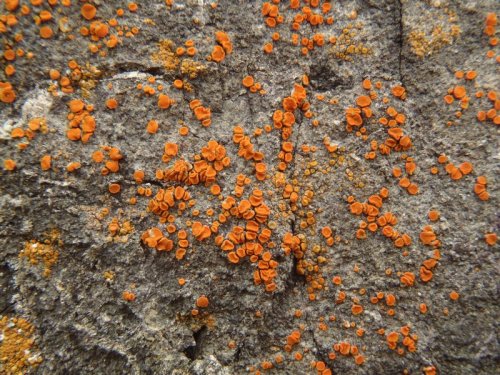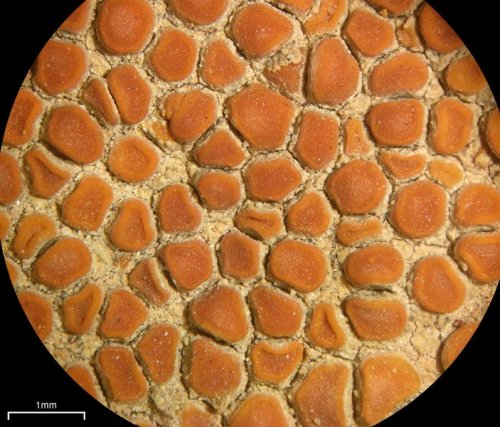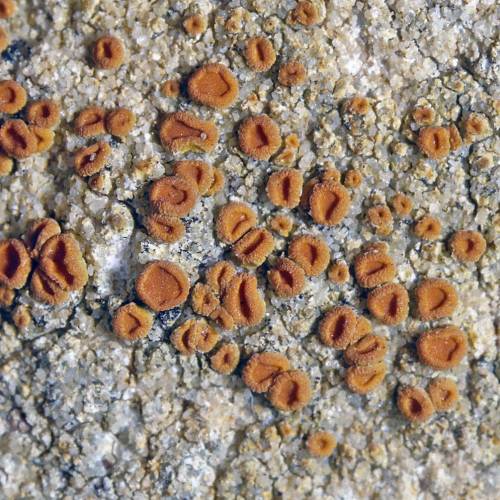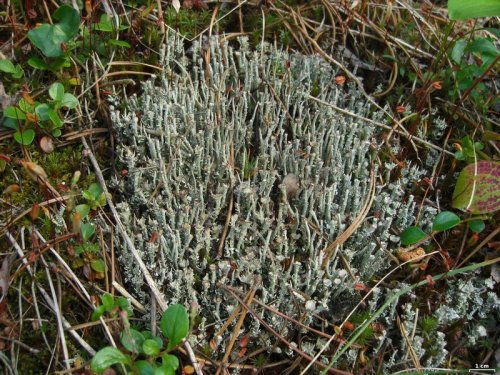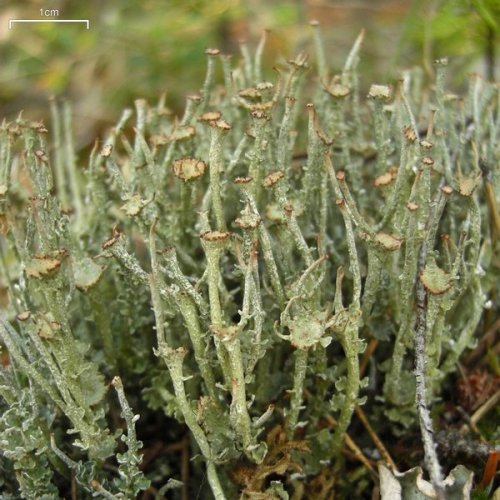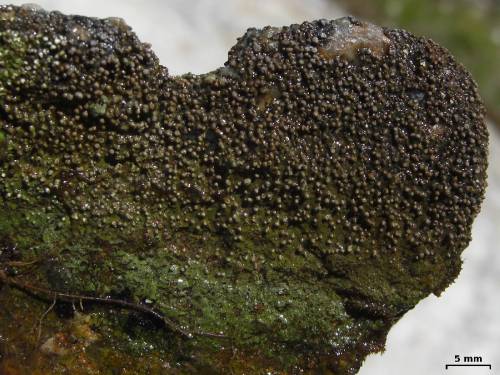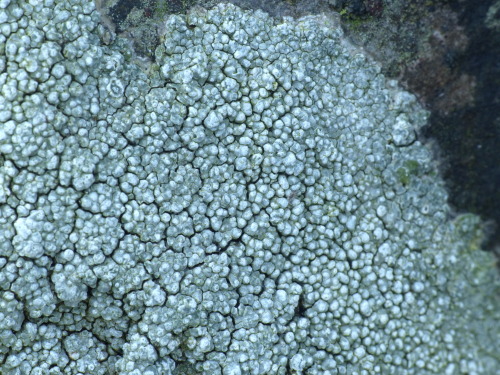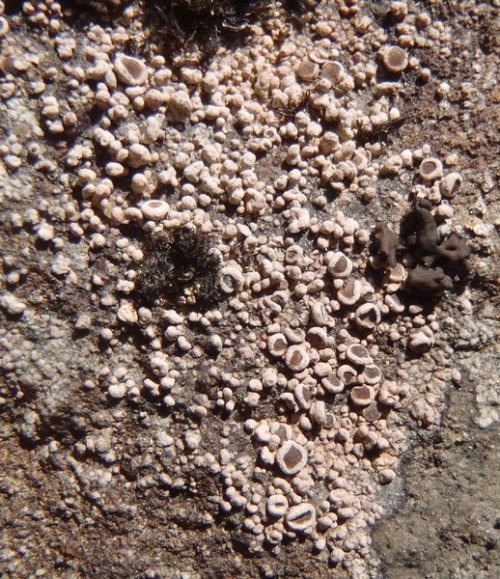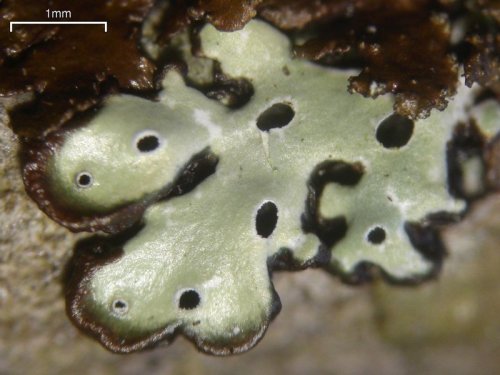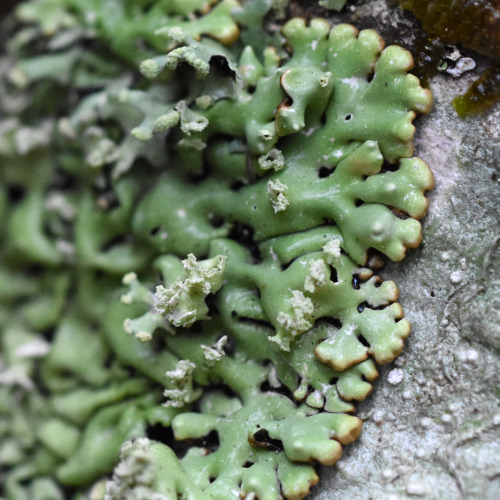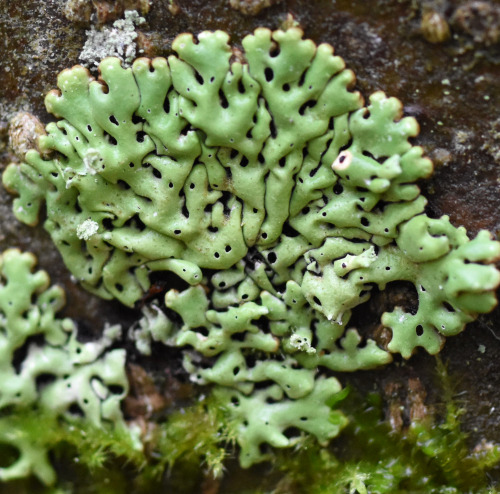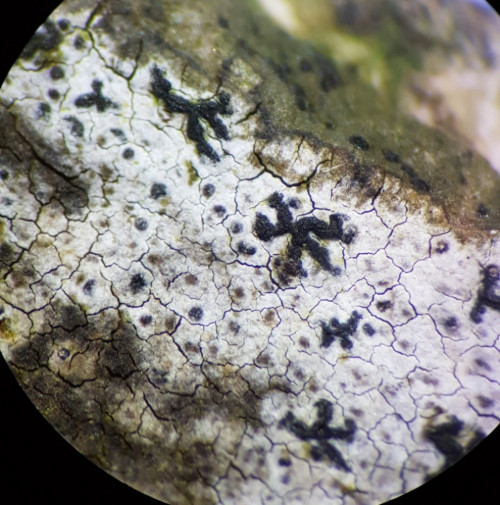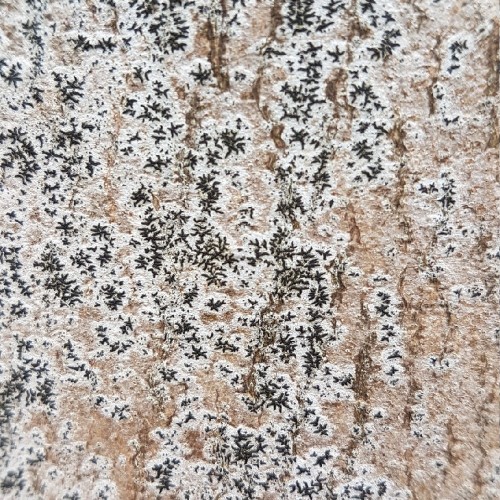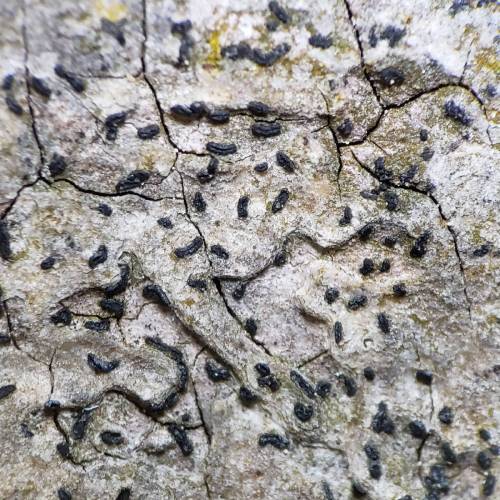#lichenized fungus
Polycauliona luteominia
Red firedot lichen
This crustose lichen has a thin, immersed basal thallus, and so generally appears as a smattering of round apothecia. The apothecia have a prominent margin, and a flat or concave disc. P. luteominia comes in two varieties: var. luteominia, which has orange apothecia, and var. bolanderi, which has bright red apothecia. Both can be found on rock and soil near the Pacific coast of North America.
info:source
Post link
Koerberiella wimmeriana
And this time
We’re going to get *BUMPY*
K. wimmeriana is a crustose lichen with a gray or pink-gray thallus made up of rounded, bulbous protrusions. It produces cylindrical isidia, and brown-disked apothecia. It colonizes siliceous rock near water in sub-alpine areas of the northern hemisphere.
Post link
Opegrapha vulgata
I would have never thought lichens could be vulgar, but here it is guys–the most vulgar lichen out there. O. vulgata is a script lichen, meaning that it has long, slit-like, lirellate apothecia. Also I hate the word slit. Anyhow, O. vulgata has a smooth, pale gray to tan, green-tinted thallus. Its apothecia are black, but variable in shape–from straight to curving to squiggly to star-like. So how to identify it in comparison with the vast array of other script lichens? By its longer conidia, of course! What’re conidia? Conidia are well, it’s complicated. They are tiny, asexual, spores that serve as the male gametes. So like, sperm! Kinda. Don’t worry too much about. All you gotta know is that O. vulgata’s conidia are really long. Now you know why it’s so vulgar! This lichen grows on smooth tree bark in humid, shaded areas throughout the world.
Post link








Stereocaulon botryosum
Cauliflower foam lichen
Thinking about it, it’s weird that so many things in the world ended up being cauliflower shaped–there’s cauliflower, cauliflower geodes, cauliflower mushrooms (genus Sparassis), cauliflower corals (genus Pocillopora), this lichen, etc. Nature loves a roundish, warty, white blob, I guess. Or humans do, and that’s why we bred cauliflower in the first place and started naming things after it. Well S. botryosum may appear cauliflower-like, but it is a lichen, meaning it is a symbiotic association between a fungi and in this case, a green algae. It grows on siliceous rock and soil in Arctic and Alpine habitats in North America and Europe.







Phaeophyscia endococcinodes
Starburst shadow lichen
Being an American living in Germany, I do not have access to many of the snack foods and candies I grew up with, and they often slip my mind. So imagine reading the word “starburst” and remembering that Starburst candy exists out there in the world somewhere and you do not have access to it. Trying so hard to focus on this lichen but all I can think about are tiny chewy fruit cubes … Anyway, P. endococcinodes is a foliose lichen with a gray-brown to gray-green upper surface and frequent, black-disked apothecia. It grows on rock and occasionally bark in Africa, Asia, Europe, and North America. It has a characteristic red medulla (inner layer made up of fungal hyphae) which I imagine is the same color as a red starburst, which is probably the best original Starburst flavor, though I am partial to orange myself. Wait, lichens, yes. And this is how P. endococcinodes got its species name (“endo-” meaning inner and “coccin” meaning scarlet and “-odes” meaning to have the nature of).

